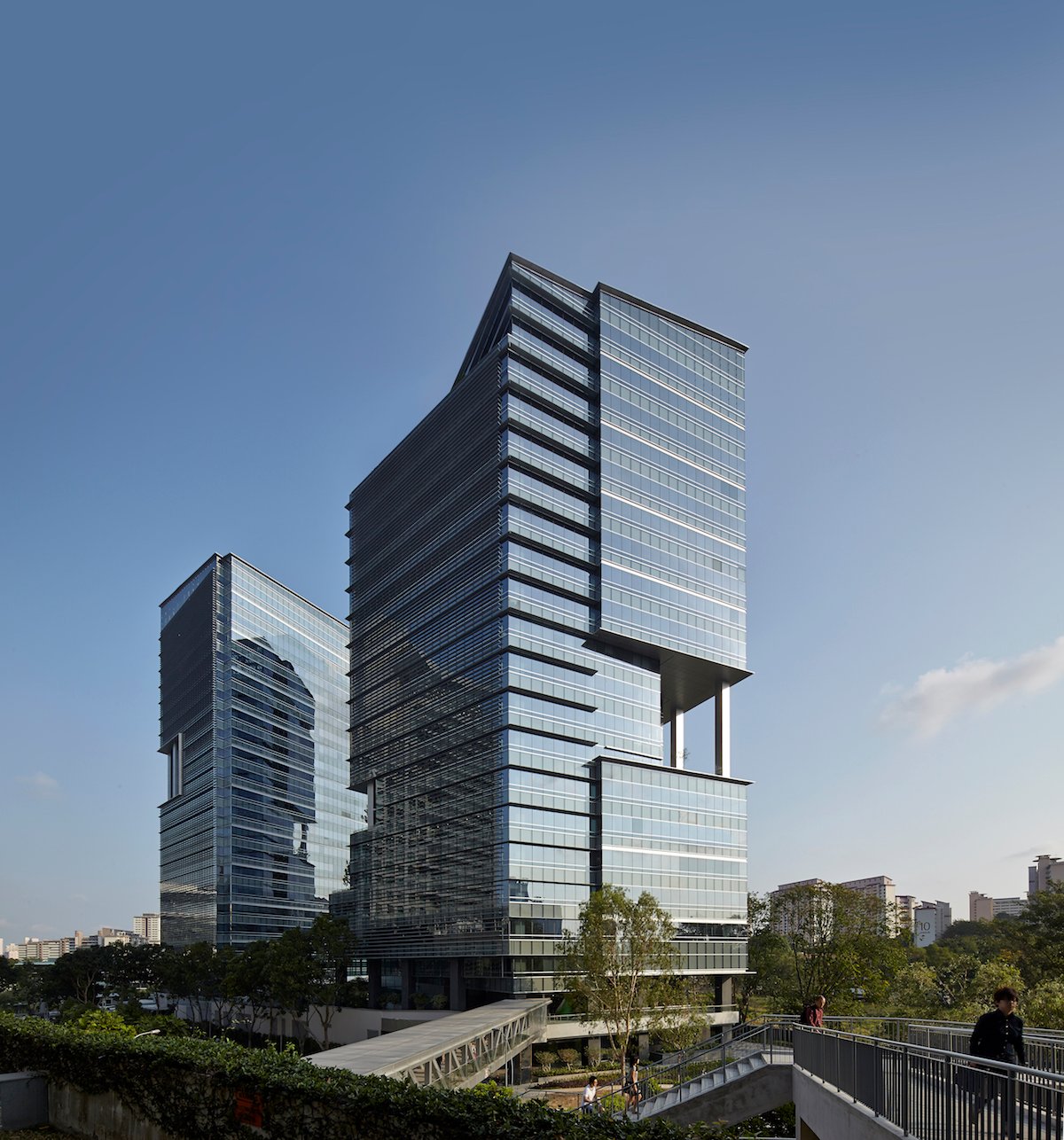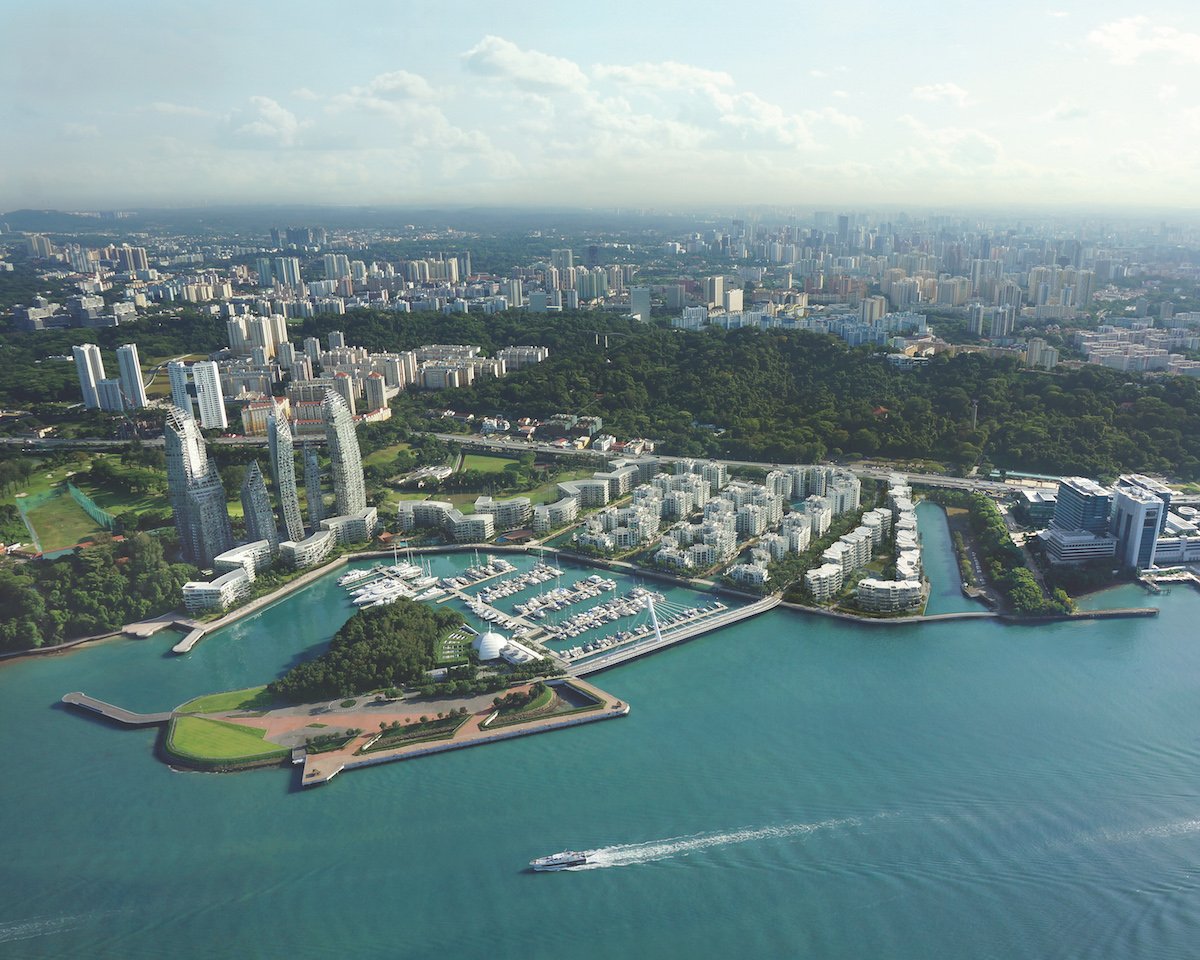A melting pot where old-world charm meets modernity, Singapore is an amalgamation of styles, influences and times. The country’s architecture is a hybridisation: remnants of its colonial history, relics representing its religious and ethnic diversity, and modernist structures that incorporate the latest global trends. It is these trends that define the current generation of design and set the tone for the industry. Established in 1996, DCA Architects has been an integral part of Singapore’s architecture scene for over 20 years. The company’s CEO, Vincent Koo Tin Chew, has been involved with the business since its inception and is
well placed to share his views on the emerging trends in architecture globally, and how Singapore is staying abreast of them.
Sustainable designs
As climate change becomes more of a widespread social issue, architecture that minimises negative environmental impact is considered increasingly important. In Singapore, the Building and Construction Authority (BCA) has assessment criteria for evaluating the environmental performance of new and existing buildings. Promoting the construction of green, sustainable structures, buildings that achieve the BCA Green Mark, are highly energy- and resource-efficient. “BCA has developed and implemented many initiatives to encourage building owners and stakeholders to build a sustainable future,” says Vincent. “There is a target to make up to 80% of Singapore’s built environment green by 2030.”
Heeding the call by BCA to encourage such ecologically driven initiatives, DCA has integrated sustainable design features into many of its developments. For instance, its recently completed Mapletree Business City II (MBCII), Singapore’s tallest business park, features aquatic bioswirls for rainwater harvesting, while The Metropolis, also a commercial office space, contains landscaped gardens and solar shading — both aesthetic and green.
“Pursuing sustainable designs has always been part of our philosophy,” shares Vincent. “A number of our projects have been awarded with the BCA Green Mark Platinum, including the Bedok integrated transport hub and the MBCII, which has also garnered the prestigious Leadership in Energy and Environmental Design (LEED) Gold level award.

“There is a target to make up to 80% of Singapore’s built environment green by 2030.” – Vincent Koo Tin Chew
“Some of our projects have explored the use of new environmentally sustainable materials, such as cross-laminated timber and precast lightweight concrete panels, which greatly reduce a building’s carbon footprint. We also endeavour to incorporate energy-efficient features where possible, such as high-performance, low-emissivity glass, photovoltaic panels for solar energy, and water-efficient fittings, as they collectively contribute to an energy-efficient building.”
The latest green methodologies
Engagement with ongoing research into best-practice sustainability methods is also essential for companies to stay abreast of the latest green methodologies. Recognising this, DCA facilitates study trips overseas to enhance the knowledge of its staff. “We have attended study trips with BCA to Japan, New York and Finland to learn about the latest building trends and technologies, such as Prefabricated Prefinished Volumetric Construction [PPVC] and the use of Digital Virtualisation in building design.” Furthermore, the company has 3 Green Mark managers who have undergone training from BCA. “They now have the expertise to collaborate with our material and equipment [M&E] and structural counterparts to create ecological, sustainable design,” explains Vincent.
Advances in technology — both in digital products and physical materials — are changing the scope and output of architecture. Tools like laser cutting and 3D printing, while still expensive, are becoming increasingly mainstream, and data-driven technologies such as BIM (Building Information Modelling) are enabling designers to engage in real-time environmental analysis.

DCA is at the forefront of adopting BIM in Singapore. Engaging with 3D modelling programs and training courses, such as Autodesk Revit Architecture, has enabled it to explore and experiment with new technologies like Virtual Design and Construction (VDC). “VDC gives us the opportunity to explore 3D virtual walkthrough features which allow all stakeholders, including the developer/owner, a better understanding of the design at an early stage, so any modifications or changes can be made before a building is constructed,” shares Vincent. “We are also one of the early firms to invest in a 3D printer, which we use to test out certain aspects of the design in a physical model.
“With our extensive experience and knowledge in BIM, we are reshaping how the building and construction industry operates. This has downstream benefits for contractors, as well as estate managers, as these BIM models can be further developed for the purpose of project timeline management: 5D — cost estimate; and 6D — facilities management.”
A shift in the demographic landscape
As the world’s population ages, the demographic landscape of its cities also needs to shift. In conjunction with city planners and policymakers, housing largely falls into the realm
of architects, many of whom are introducing adaptations to facilitate the social, cultural and physical structures necessary for an age-friendly city.
According to the World Health Organization (WHO), the 8 domains of an age-friendly city are: housing, social participation, civic participation and employment, community support and health services, respect and social inclusion, communication and information, outdoor spaces and buildings, and transportation. DCA’s residential projects have been designed with these realms in mind. “One of our fundamental design intentions is to achieve a people-centric design, one that can cater to a diverse group of users including, but not limited to, the ageing population,” says Vincent. “In our residential projects, such as Corals at Keppel Bay, special features like smart-home automation have been introduced to facilitate the ease of use, and recreational facilities such as fitness workout stations are also a common feature of our residential projects.”

“With our extensive experience and knowledge in BIM, we are reshaping how the building and construction industry operates.” – Vincent Koo Tin Chew
Another of DCA’s developments, the mixed-use Bedok Mall and Bedok Residences, has recently been awarded the Land Transport Authority’s Best Design Land Transport Integration award for its seamless assimilation into Singapore’s public transport system. Completed in phases starting from 2014, this building’s accessibility, in combination with its dual utility as a mall, engenders some of the domains for an age-friendly city. Furthermore, to ensure DCA meets the needs of the changing demographic landscape, the company employs 3 Universal Design assessors “who have undergone BCA’s training and are able to offer advice in our pursuit for an intuitive and universally inclusive design.”
Simplicity is the ultimate sophistication
Leonardo Da Vinci once famously stated that, “Simplicity is the ultimate sophistication.” This notion is the basic principle that underpins some of the world’s most understated and revered buildings. According to Vincent, Singapore’s architecture is seeing some interesting interpretations of simplicity and minimalism. “Some express it in the form of the external appearance of the building,” he says. “Others embrace it as a singular pursuit, which translates through the finished form and detailing right down to the smallest item, like the design of a door handle.”
Over its 20-year history, DCA has completed various landmark projects that have been significant to Singapore’s development. “One example is the redevelopment of the southern precinct of Singapore, Keppel Bay Harbour,” says Vincent. “Starting from the master planning stage, DCA was instrumental in transforming the old shipyard docking areas into today’s waterfront skyline.”



